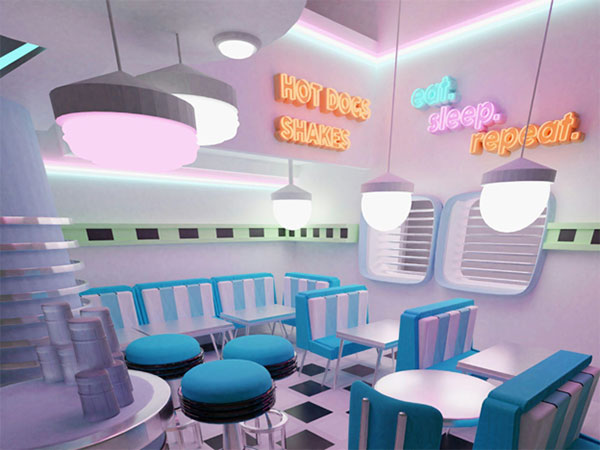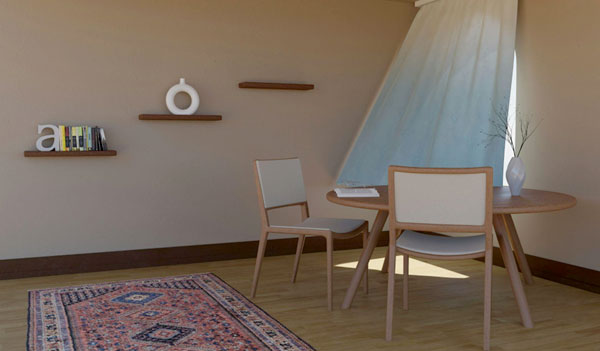
3D walkthrough animations - a basic intro
Many of our clients are in the property industry. In this guest post, you’ll have a good intro to what to consider when commissioning a 3D walkthrough.
Storytelling is currently highly valued in several industries, such as architecture, furniture, interior design, and real estate. 3D architectural walkthrough services are the preferred option for providing an immersive experience through 3D walkthrough animations, as they combine creativity and cutting-edge technology.
Have you ever been amazed by a virtual tour that transports you to architectural wonders or takes you on a journey through a digital creation? If the answer is yes, you have likely experienced the captivating charm of 3D walkthrough animation provided by a 3D architectural visualization studio. This article will provide a backstage pass to the fascinating world of a 3D architectural walkthrough company, where technical expertise meets creativity.
What is it all about? 3D walkthrough animation and its technical foundations
A 3D walkthrough animation company creates this technique for viewers to explore a virtual environment fluidly and realistically. It is like strolling through a carefully designed architectural masterpiece or navigating the fantastical landscapes of a digitally created world. 3D walkthroughs have applications beyond entertainment and are helpful in architecture, real estate, gaming, and various industries seeking to communicate complex ideas in an engaging and accessible manner.
Furthermore, the enchantment of 3D walkthrough animation is truly appreciated when you understand the technical underpinnings that make these immersive experiences possible. The basics of 3D graphics, animation principles, and the entire pipeline of creating these walkthroughs contribute to the seamless fusion of art and technology. Find out more below.
Fundamentals of 3D Graphics
1. Basics of 3D modeling
- Wireframes and Meshes: Wireframes are the basis of 3D models and consist of skeletal structures that outline shapes. These wireframes are filled with meshes, surfaces, and structures, which define the objects in the virtual space.
- Textures and Materials: To make it more realistic, one must add textures and materials. By doing so, the surfaces become livelier, imitating various characteristics such as the roughness of stone or the shine of polished metal.
2. Rendering techniques
- Ray Tracing vs. Rasterisation: In a 3D environment, how light interacts with surfaces is determined by two primary rendering techniques: ray tracing and rasterisation. A 3D architectural walkthrough company can employ ray tracing to produce highly realistic images. However, it is computationally intensive, while rasterisation is faster but may need to be more realistic.
- Lighting and Shading: The visual depth of a 3D scene is enhanced by the interplay of light and shadows, which are further enhanced by sophisticated shading techniques. Thus, realistic lighting is vital for creating an immersive and convincing experience.
Animation principles
1. Keyframe animation
- Definition and Purpose: Defining specific frames within a sequence is the basis of keyframe animation. These frames act as reference points, and the software then interpolates the frames in between, creating smooth transitions between movements.
- Creating Smooth Transitions: Here, seamless transitions between keyframes are created, ensuring that the movement feels natural and captivating to the viewer. This principle is vital for the fluidity of 3D walkthrough animations created by a 3D walkthrough animation company.
2. Rigging and skeletal animation
- Importance in Character Animation: Rigging is an essential aspect of character animation that holds significant importance. It involves developing a structure resembling a skeleton for characters, which enables animators to control their movements more realistically.
- Rigging Process and Tools: Rigging necessitates the precise positioning of joints and the utilisation of specialised tools. This methodology allows characters to move convincingly and adds an extra layer of realism to the virtual world experience.
3D Walkthrough Animation Pipeline
1. Pre-production phase
- Conceptualisation and Storyboarding: Conceptualisation is the journey’s starting point, where ideas are transformed into a coherent narrative. Storyboarding helps to visualise important scenes and transitions, providing the groundwork for the entire project.
- Asset Planning and Acquisition: Identifying and obtaining the necessary assets, such as 3D models and textures, is essential to ensure a seamless production process.
2. Production phase
- Modeling and Texturing: A 3D architectural walkthrough company or artist carefully and skillfully designs 3D models and detailed textures to bring the virtual world to life, evoking realism.
- Animation and Rigging: This process involves animating objects or characters using keyframe animation and rigging techniques, injecting movement and vitality into the virtual space.
- Scene Setup and Camera Placement: In this stage, optimal camera angles are determined to guide the viewer through the experience, while objects are strategically placed to perfect the scene.
3. Post-production phase
- Rendering and Compositing: The final touches include rendering the animated sequences and compositing them into a cohesive whole to ensure the visual elements seamlessly come together.
- Sound Design and Integration: Adding a layer of auditory richness enhances the immersive experience. Sound design and integration contribute to the atmosphere, further engaging the audience.
Software and tools used for 3D architectural walkthrough services
There are several industry-standard software used for 3D animation walkthrough services. Maya by Autodesk is a software suite widely used in the entertainment industry. It provides several tools for 3D modeling, animation, and rendering. Blender, on the other hand, is an open-source software that has become increasingly popular due to its comprehensive feature set and ease of use. Game development engines such as Unity and Unreal Engine have expanded their functionality into 3D walkthrough animation, allowing for real-time rendering capabilities and interactivity.
Furthermore, plug-ins and add-ons are available that can make workflows more efficient. These specialised tools can help with tasks such as creating realistic renderings and performing physics simulations. They can also facilitate the creation of lifelike movements and behaviors, ultimately enhancing the walkthrough quality.

Wrap Up
This article has discussed the technical principles that make up the foundation of 3D walkthrough animation provided by 3D architectural walkthrough services. Furthermore, the extensive adoption of 3D walkthrough animation highlights its value across various industries. Whether it is used for architectural visualisation, entertainment, or education, the capability to convey ideas that are aesthetically appealing has become a fundamental aspect of effective communication.
As this article concludes, the evolving technology and creativity scenario presents endless possibilities, encouraging artists, developers, and enthusiasts to push the limits and redefine the future of visual storytelling through 3D animation walkthrough services.
Author:
Aimee S. Marshall: Aimee is a seasoned digital artist and design enthusiast who is passionate about creating stunning visuals. With over a decade of experience in 3D rendering and design, she has worked on projects spanning various industries, from architecture and interior design to product visualisation and advertising. Aimee shares her expertise and insights through writing, mentoring, and speaking engagements, aiming to inspire others in the dynamic world of 3D rendering and design.